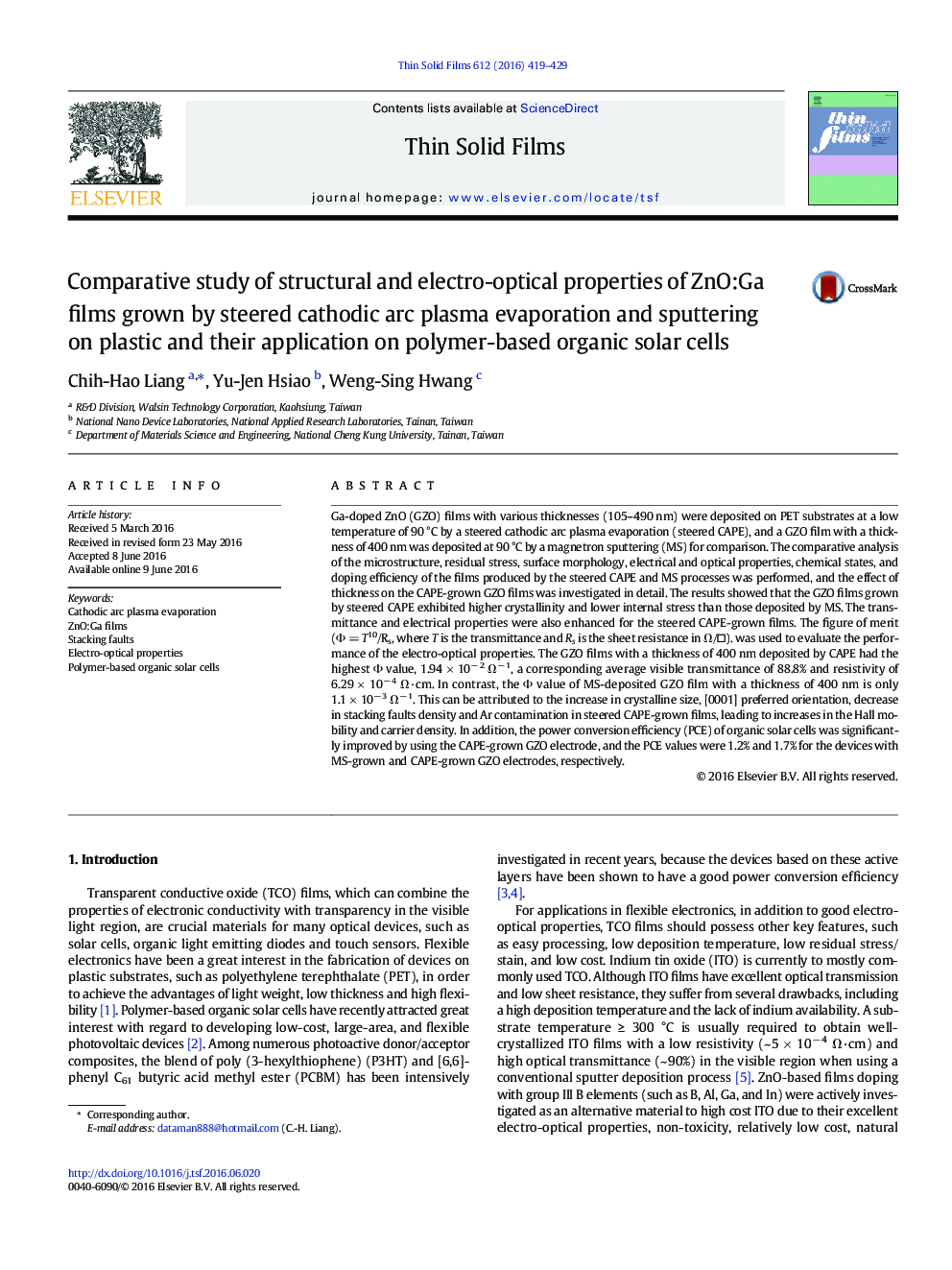| کد مقاله | کد نشریه | سال انتشار | مقاله انگلیسی | نسخه تمام متن |
|---|---|---|---|---|
| 1663939 | 1517997 | 2016 | 11 صفحه PDF | دانلود رایگان |

• ZnO:Ga (GZO) films were grown on PET by steered cathodic arc plasma evaporation (CAPE).
• Comparative study of the performance of GZO films grown by steered CAPE and sputtering
• Films grown by CAPE show greater crystallite size and lower stacking fault density.
• Films grown by steered CAPE show low resistivity and high transparency.
• The performance of organic solar cells was improved by using CAPE-grown GZO electrodes.
Ga-doped ZnO (GZO) films with various thicknesses (105–490 nm) were deposited on PET substrates at a low temperature of 90 °C by a steered cathodic arc plasma evaporation (steered CAPE), and a GZO film with a thickness of 400 nm was deposited at 90 °C by a magnetron sputtering (MS) for comparison. The comparative analysis of the microstructure, residual stress, surface morphology, electrical and optical properties, chemical states, and doping efficiency of the films produced by the steered CAPE and MS processes was performed, and the effect of thickness on the CAPE-grown GZO films was investigated in detail. The results showed that the GZO films grown by steered CAPE exhibited higher crystallinity and lower internal stress than those deposited by MS. The transmittance and electrical properties were also enhanced for the steered CAPE-grown films. The figure of merit (Φ = T10/Rs, where T is the transmittance and Rs is the sheet resistance in Ω/□). was used to evaluate the performance of the electro-optical properties. The GZO films with a thickness of 400 nm deposited by CAPE had the highest Φ value, 1.94 × 10− 2 Ω− 1, a corresponding average visible transmittance of 88.8% and resistivity of 6.29 × 10− 4 Ω·cm. In contrast, the Φ value of MS-deposited GZO film with a thickness of 400 nm is only 1.1 × 10− 3 Ω− 1. This can be attributed to the increase in crystalline size, [0001] preferred orientation, decrease in stacking faults density and Ar contamination in steered CAPE-grown films, leading to increases in the Hall mobility and carrier density. In addition, the power conversion efficiency (PCE) of organic solar cells was significantly improved by using the CAPE-grown GZO electrode, and the PCE values were 1.2% and 1.7% for the devices with MS-grown and CAPE-grown GZO electrodes, respectively.
Journal: Thin Solid Films - Volume 612, 1 August 2016, Pages 419–429